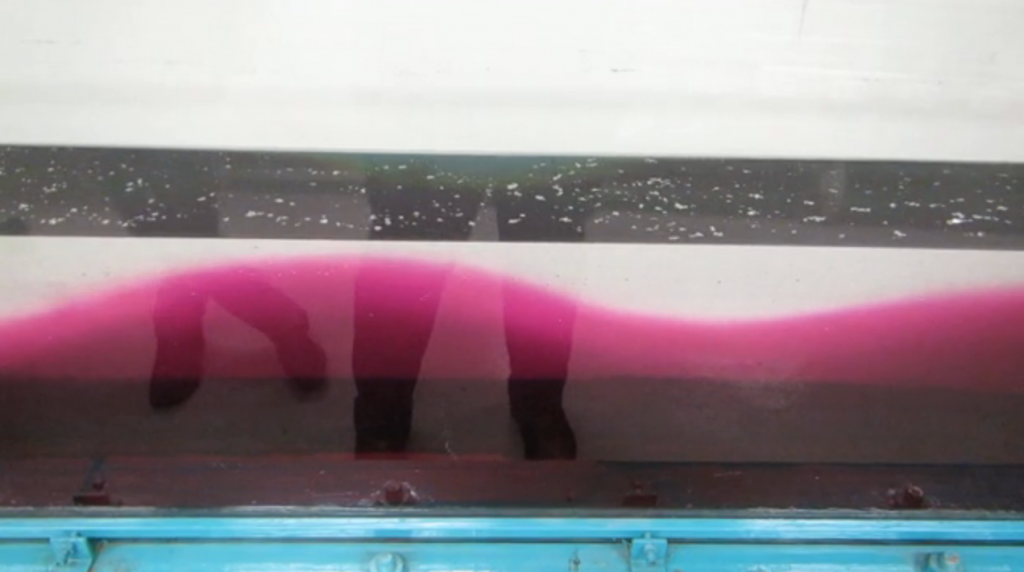
Surface imprints of internal waves
How internal waves in the ocean can be spotted on the surface.
Under certain conditions, internal waves in the ocean can be spotted at the ocean’s surface due to changes in surface roughness or to the movement of floating foam or debris. They can be spotted if half their wavelength is longer than the distance between the interface on which the internal wave is traveling and the water surface, so that the orbital movement caused by the internal waves reaches the water surface. In the tank, they can also be seen – for example by adding small floating particles to the water surface.

Internal wave in a tank. Seen from the side due to different coloring of the two layers, and on the surface in the distribution of floating tracer.
In the movie below, you can see the interface between water layers of different densities and the water surface with particles on it. The particles make it easy to spot how the water surface is being stretched and squeezed as internal waves travel through underneath.
For more information on internal waves, check out these posts [which are scheduled to go online over the next couple of days]:
Need your help! “Wish list” for a student lab for tank experiments? | Mirjam S. Glessmer says:
[…] Surface imprints of internal waves (example) […]
Lee waves with an asymmetrical “mountain” | Mirjam S. Glessmer says:
[…] as internal waves, but you see a very clear signature in surface waves! Usually all we see are surface convergences and divergences, adjusting the surface layer to the internal waves underneath. That we now see surface waves is, I am assuming, mainly due to the shallow water relative to the […]
Who is faster, the currents or the waves? The Froude number – Mirjam S. Glessmer says:
[…] than those on a free surface. If you are interested, you can have a look at that phenomenon here. But with waves running a lot slower, it’s easy to imagine that there are places in the ocean […]
mglessmer says:
Thanks! The particles are just silver party glitter that I had lying around. The kind of stuff that comes in salt shakers and that you put on glue on handcraft projects, you know?
Anna says:
Easy! I’ll try to get some during the weekend! looking forward to playing around with my stratified fluid…
mglessmer says:
Awesome, have fun and let me know how it goes! :-)
Anna says:
great videos! which kind of particles did you use for such a clear visualization? I’d like to try some similar experiments in my lab.